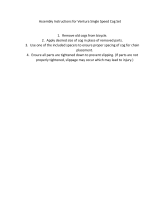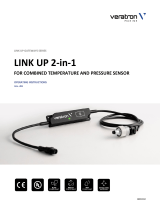
Technical Reference for Garmin NMEA 2000 Products 11
General NMEA 2000 Data Type Requirements
Category Data Type PGN Data Required Typical Sender
Cardinal Wind Direction 130306 - Wind Data, 129026 - COG/SOG, 129029
- GNSS Position, 127250 - Vessel Heading, and
128259 - Water Speed
(If a Heading Sensor and Water Speed Sensor are
not present, a less-accurate reading can be calculated
using only the Wind Sensor and GPS antenna
[130306 - Wind Data, 129026 - COG/SOG and
129029 - GNSS Position])
(If a GPS antenna is not present, a less-accurate
reading can be calculated using only the Wind Sensor,
Water Speed Sensor, and Heading Sensor [130306
- Wind Data, 127250 - Vessel Heading, and 128259 -
Water Speed])
Either:
• Wind Sensor, a Water Speed
Sensor, a Heading Sensor, and a
GPS Antenna
• Wind Sensor and a GPS Antenna
• Wind Sensor, a Water Speed
Sensor, and a Heading Sensor
Beaufort Scale 130306 - Wind Data, 129026 - COG/SOG, 129029
- GNSS Position, 127250 - Vessel Heading, and
128259 - Water Speed
(If a Heading Sensor and Water Speed Sensor are
not present, a less-accurate reading can be calculated
using only the Wind Sensor and GPS antenna
[130306 - Wind Data, 129026 - COG/SOG and
129029 - GNSS Position])
(If a GPS antenna is not present, a less-accurate
reading can be calculated using only the Wind Sensor,
Water Speed Sensor, and Heading Sensor [130306
- Wind Data, 127250 - Vessel Heading, and 128259 -
Water Speed])
Either:
• Wind Sensor, a Water Speed
Sensor, a Heading Sensor, and a
GPS Antenna
• Wind Sensor and a GPS Antenna
• Wind Sensor, a Water Speed
Sensor, and a Heading Sensor
Sunrise/Sunset 129026 - COG/SOG and 129029 - GNSS Position GPS Antenna
Sailing Apparent Wind Speed 130306 - Wind Data Wind Sensor
Apparent Wind Angle 130306 - Wind Data Wind Sensor
True Wind Speed 130306 - Wind Data and 128259 - Water Speed (If a
Water Speed Sensor is not present, a less-accurate
reading can be calculated using a GPS antenna
instead [129026 - COG/SOG and 129029 - GNSS
Position])
Either a Wind Sensor and Speed Sensor
or a Wind Sensor and a GPS Antenna
True Wind Angle 130306 - Wind Data and 128259 - Water Speed (If a
Water Speed Sensor is not present, a less-accurate
reading can be calculated using a GPS antenna
instead [129026 - COG/SOG and 129029 - GNSS
Position])
Either a Wind Sensor and Speed Sensor
or a Wind Sensor and a GPS Antenna
Wind VMG (Velocity Made Good) 130306 - Wind Data and 128259 - Water Speed (If a
Water Speed Sensor is not present, a less-accurate
reading can be calculated using a GPS antenna
instead [129026 - COG/SOG and 129029 - GNSS
Position])
Either a Wind Sensor and Speed Sensor
or a Wind Sensor and a GPS Antenna
Waypoint VMG 129284 - Nav Data Garmin Chartplotter and GPS Antenna
Maximum Apparent Wind Speed 130306 - Wind Data Wind Sensor
Maximum True Wind Speed 130306 - Wind Data and 128259 - Water Speed (If a
Water Speed Sensor is not present, a less-accurate
reading can be calculated using a GPS antenna
instead [129026 - COG/SOG and 129029 - GNSS
Position])
Either a Wind Sensor, a Heading Sensor,
and Speed Sensor or a Wind Sensor, a
Heading Sensor, and a GPS Antenna
Opposite Tack Heading 130306 - Wind Data, 127250 - Vessel Heading, and
128259 - Water Speed (If a Water Speed Sensor is
not present, a less-accurate reading can be calculated
using a GPS antenna instead [129026 - COG/SOG
and 129029 - GNSS Position])
Either a Wind Sensor, a Heading Sensor,
and Speed Sensor or a Wind Sensor, a
Heading Sensor, and a GPS Antenna
(Continued)























